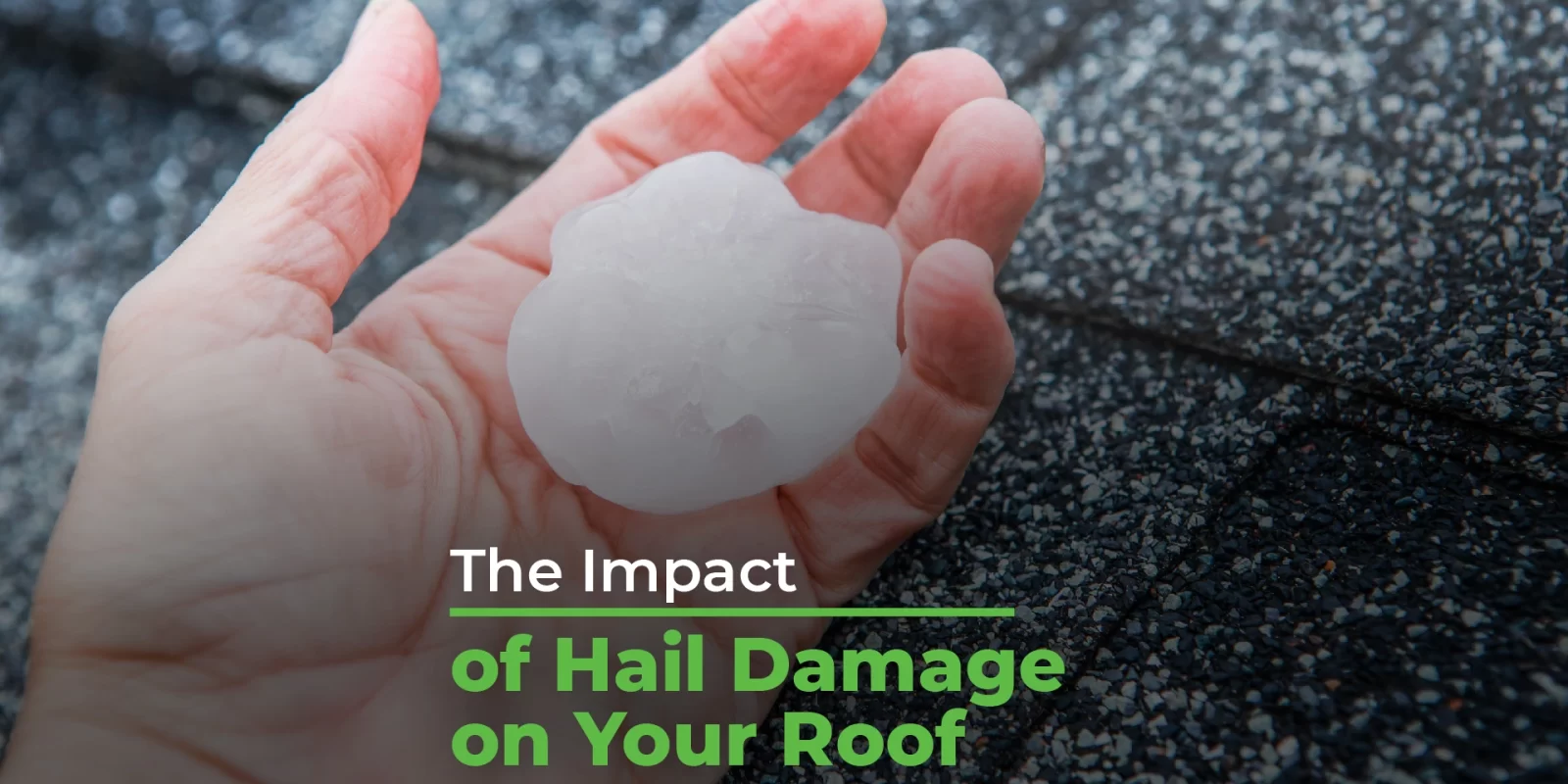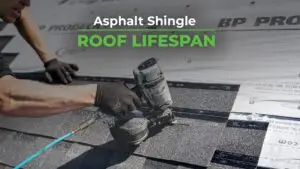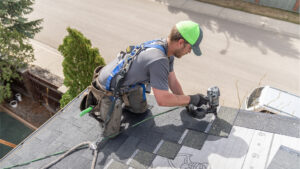Hailstorms can wreak havoc on roofs, inflicting damage that compromises both the aesthetic and structural integrity of your home. Knowing what to look for when assessing hail damage will help you navigate repairs, implement preventative measures, or go through insurance claims.
Types of Damage Caused by Hail
Granule Loss from Shingles
One of the most common consequences of hail is the loss of granules from shingles. These granules serve a vital purpose—they provide waterproofing and protect the underlying layers of shingles from the sun’s ultraviolet rays. When hail hits, it can dislodge these granules, exposing the vulnerable layers beneath. Over time, this can lead to deterioration, premature aging, and compromised waterproofing. If left unaddressed, it may result in leaks and further interior damage.
Shingle Cracks and Punctures
Hailstones, especially those of significant size, can cause cracks or punctures in shingles. These openings can provide pathways for water to seep into your roof’s structure, potentially causing leaks and more extensive damage over time. Cracked or punctured shingles can also compromise the overall effectiveness of your roof in shielding your home from the elements.
Dents on Metal Roofs
Metal roofs are known for their durability, but even they are not entirely impervious to hail damage. Large hailstones can create noticeable dents on metal roofing panels. While these dents may not always lead to immediate leaks, they can affect the appearance of your roof and potentially weaken the structural integrity. Dents could also disrupt the water runoff system of the roof, leading to potential pooling and drainage issues.
Soft Spots on Asphalt Shingles
Hail impact can sometimes cause soft spots on asphalt shingles. These spots feel spongy to the touch and indicate that the shingle’s protective asphalt layer has been compromised. These areas can deteriorate more rapidly compared to undamaged portions, making the entire shingle susceptible to cracking, curling, and leaks.
Damage to Gutters, Skylights, and Vents
It’s not just the roofing material that can suffer from hail damage. Gutters, skylights, and vents are also vulnerable to impact and may require repairs. Hail can dent or crack gutters, impairing their ability to channel water away from the roof effectively. Skylights and vents might sustain shattered or cracked glass covers, leading to potential leaks and water infiltration.
How to Address Hail Damage
Experiencing a hailstorm can be a stressful event, but knowing the right steps to take afterward can help minimize the impact on your roof and wallet.
- Document the damage. Take clear and detailed photographs from various angles to create a comprehensive visual record of the damage. This will be useful if you decide to file an insurance claim or when working towards repairs.
- Contact a professional. Reputable roofing companies have the expertise to evaluate the extent of the damage and recommend the appropriate course of action. Avoid attempting repairs yourself, as this could lead to further problems.
- Schedule repairs promptly. Timely repairs can prevent your roof from sustaining further damage. This may also lower costs for repairs since the issue will be addressed before it worsens and becomes more expensive to fix.
- Consider preventative measures. Although you can’t predict when hail damage will occur or how extensive it might be, there are ways to minimize the potential impact on your roof. Investing in more durable roofing materials next time you replace your roof, getting regular inspections, and prioritizing roofing maintenance are great preventative measures to take.
Following these steps can help protect your property from damage and ensure that issues are addressed before they get worse.
Conclusion
When not properly addressed, hail damage can have long-term consequences. Leaks, dents, and cracks can accelerate roof deterioration and make it more vulnerable to environmental factors, like wind and rain. In regions that experience complex weather patterns, like southern Alberta, addressing issues promptly will ensure the integrity of your property. Ultimately, swift action, including a professional inspection and necessary repairs, can prevent further decline and safeguard the long-term health of your roof and home.




